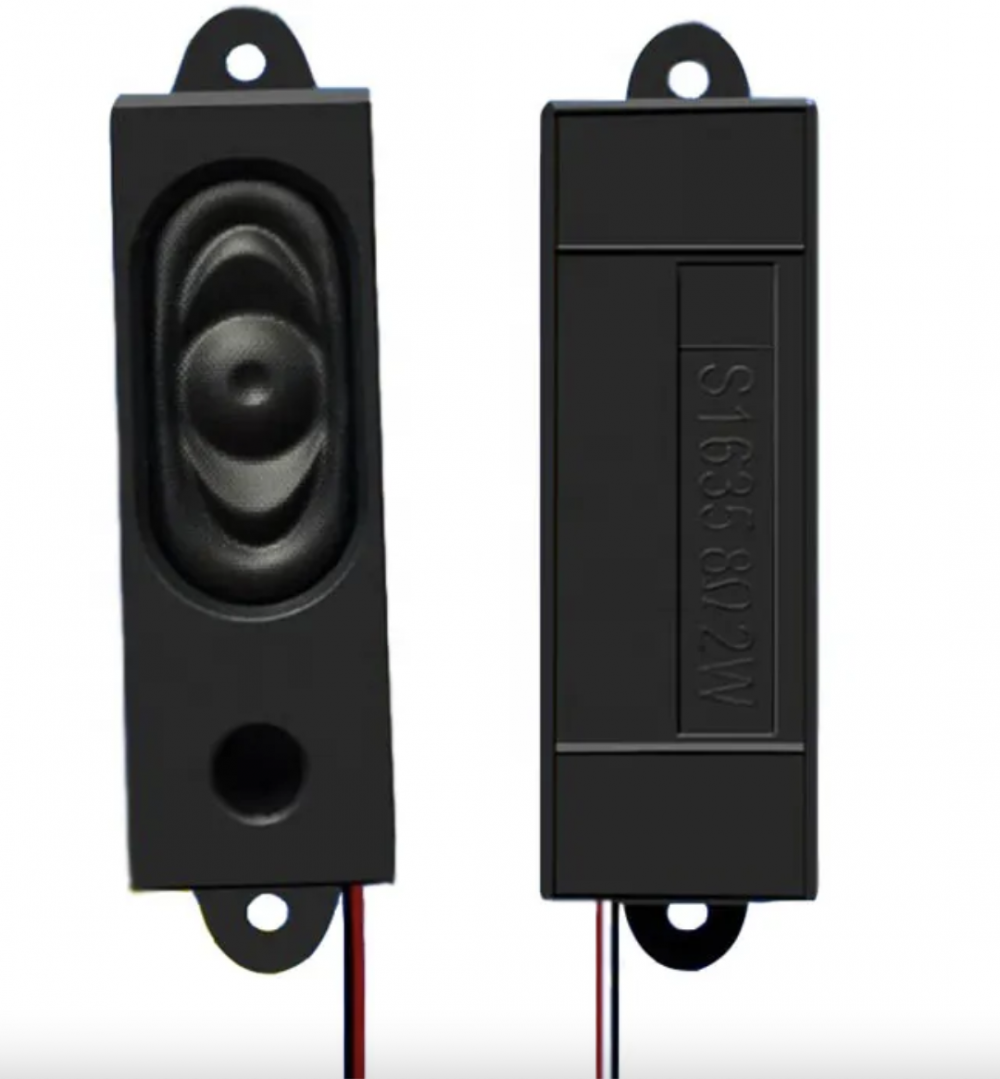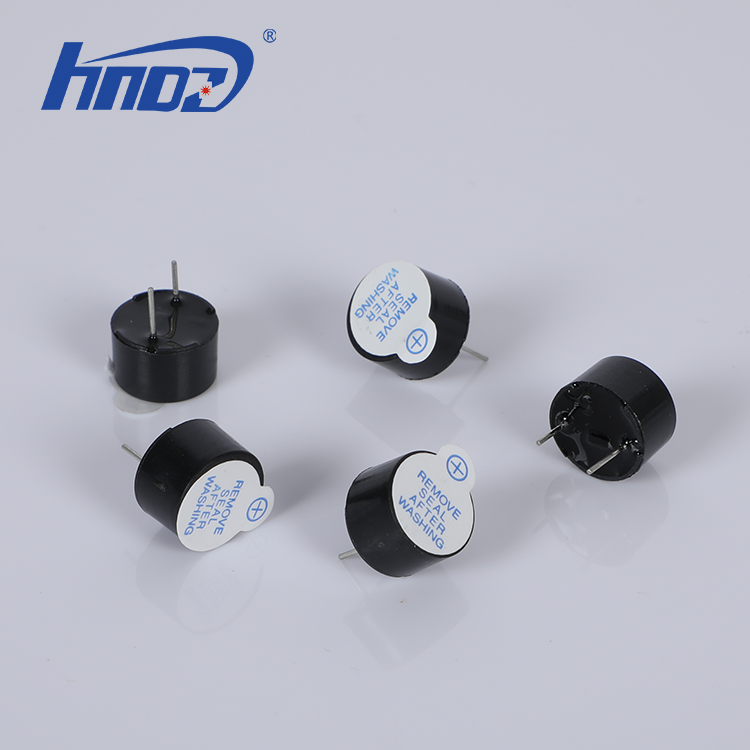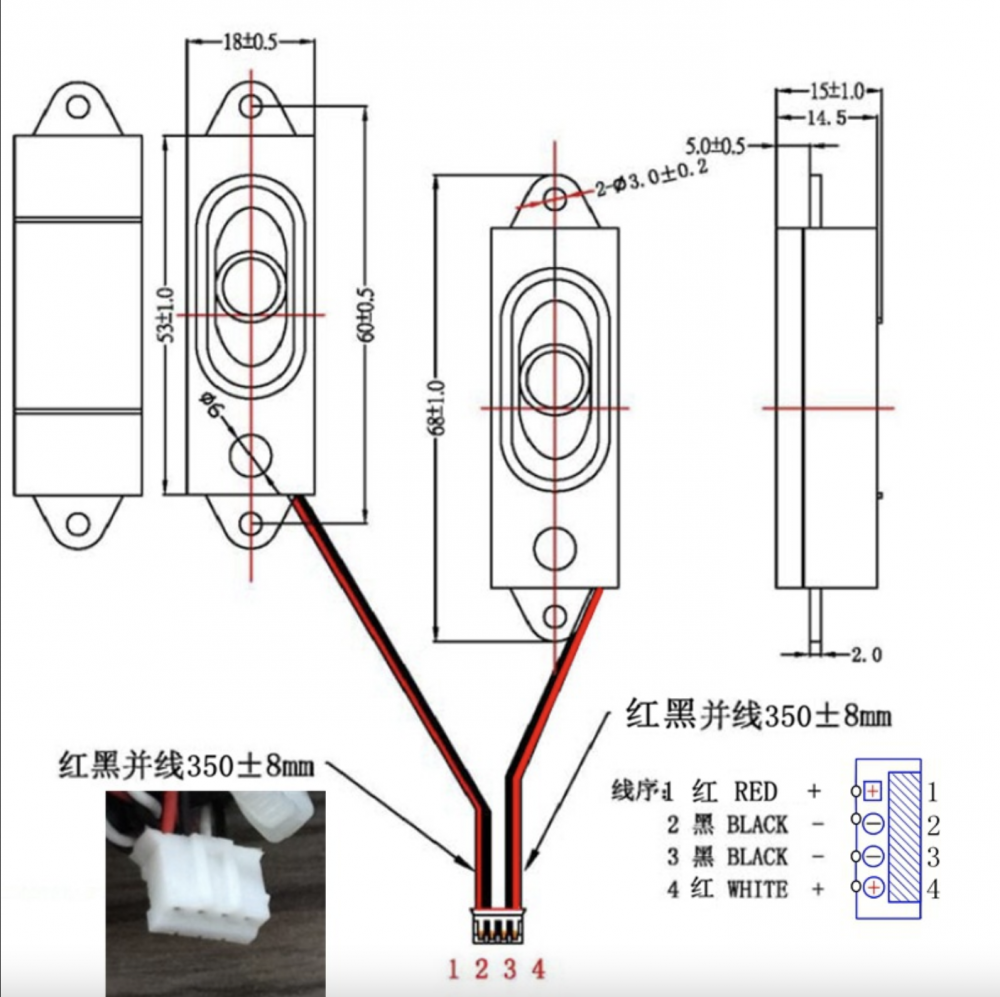1. How does it work?
A
Loudspeaker, also known as a
Speaker or a transducer, is an essential component of audio systems that converts electrical signals into sound waves. It works based on the principle of electromagnetism and consists of several key components.
Cone or Diaphragm: The loudspeaker has a cone-shaped or dome-shaped diaphragm made of materials such as paper, plastic, or metal. This diaphragm is responsible for creating sound waves.
Voice Coil: The voice coil is a wire coil attached to the diaphragm. When an electrical current flows through the coil, it creates a magnetic field.
Magnet: The loudspeaker has a permanent magnet or an electromagnet that generates a steady magnetic field. This magnet interacts with the magnetic field created by the voice coil.
Suspension System: The diaphragm and voice coil are supported by a suspension system that allows them to move back and forth while maintaining proper alignment. This system includes a surround (usually made of rubber or foam) and a spider (a flexible piece that provides structural support).
Frame or Basket: The loudspeaker's components are housed in a frame or basket, which provides structural support and holds everything together.
When an audio signal is received, it is amplified and sent to the loudspeaker. Here's how it works:
Electrical Signal: The audio signal is an electrical current that carries information about the sound, such as frequency and amplitude.
Amplification: The audio signal is amplified by an amplifier to increase its power to a level suitable for the loudspeaker.
Analogue Signal: The amplified audio signal is sent to the loudspeaker as an analogue signal. This signal flows through the voice coil.
Magnetic Field Interaction: As the audio signal flows through the voice coil, it creates an electromagnetic field that interacts with the magnetic field generated by the permanent magnet or electromagnet. This interaction causes the voice coil and diaphragm to move back and forth.
Sound Production: The movement of the diaphragm creates compression and rarefaction of air molecules, producing sound waves. These sound waves propagate through the surrounding air and reach our ears as audible sound.
The loudspeaker's performance, including its frequency response, sensitivity, and power handling, is determined by the design, quality of components, and the specific application it is intended for. Different types of loudspeakers, such as woofers, tweeters, and subwoofers, are designed to reproduce different ranges of frequencies.
2. What applications is it suitable for?
Loudspeakers are widely used in various applications that require sound reproduction. Some of the key applications where loudspeakers are suitable include:
Home Audio Systems: Loudspeakers are an essential component of home audio systems, such as stereo systems or surround sound setups. They are used to reproduce music, movies, or other audio content with high fidelity and clarity.
Public Address Systems: Loudspeakers are commonly used in public address systems, such as in stadiums, auditoriums, conference rooms, or public spaces. They provide clear and intelligible sound for announcements, speeches, or performances.
Professional Audio Systems: Loudspeakers are extensively used in professional audio setups, including concert venues, theaters, recording studios, or DJ setups. They play a crucial role in delivering live performances, studio recordings, or DJ sets with high-quality sound.
Automotive Audio Systems: Loudspeakers are an integral part of automotive audio systems, delivering sound in cars, trucks, or other vehicles. They provide an immersive audio experience for music playback, radio, navigation prompts, or hands-free calling.
Multimedia Devices: Loudspeakers are found in various multimedia devices, including televisions, computer monitors, laptops, tablets, or smartphones. They enable clear audio output for movies, TV shows, games, or video conferences.
Public Address Systems: Loudspeakers are widely used in public spaces, such as shopping malls, airports, train stations, or sports stadiums, to provide important announcements, background music, or emergency notifications.
Outdoor Sound Systems: Loudspeakers designed for outdoor use are suitable for applications like outdoor concerts, festivals, or sporting events. They are designed to withstand environmental conditions and provide high-volume sound coverage over a wide area.
Educational Institutions: Loudspeakers are employed in schools, colleges, or universities for various purposes, including classrooms, auditoriums, or gymnasiums. They ensure clear sound transmission for lectures, presentations, or school events.
Communication Systems: Loudspeakers are used in communication systems, such as intercoms, public safety systems, or emergency evacuation systems. They help in broadcasting important messages or alerts to a large number of people in various locations.
Personal Entertainment Systems: Loudspeakers are used in personal entertainment systems like headphones or portable Bluetooth speakers, providing audio output for individual listening or small gatherings.
It is important to select the appropriate loudspeaker for each application, considering factors like power output, frequency response, size, and durability to ensure optimal sound quality and performance.
3. What are the advantages and disadvantages?
Loudspeakers offer several advantages, but they also have some disadvantages. Here is a detailed description of both:
Advantages:
Sound reproduction: The primary advantage of a loudspeaker is its ability to reproduce sound with high fidelity. It can accurately reproduce a wide range of frequencies, making it suitable for listening to music, watching movies, or delivering clear speech.
Versatility: Loudspeakers come in various sizes and designs, allowing them to be used in different applications. From small portable speakers to large concert PA systems, there is a loudspeaker available for every need.
Wide coverage: Loudspeakers are designed to disperse sound over a wide area, ensuring that the sound reaches a larger audience. This makes them ideal for public address systems in venues like stadiums, concert halls, or auditoriums.
Scalability: Loudspeakers can be easily scaled up or down to meet the requirements of a specific application. Multiple loudspeakers can be connected to create a more immersive sound experience or cover a larger area.
Technological advancements: Loudspeakers have benefitted from advancements in technology, resulting in improved performance, size reduction, and efficiency. Modern loudspeakers can produce high-quality sound while consuming less power.
Disadvantages:
Size and portability: While there are portable loudspeakers available, larger loudspeakers can be bulky and heavy. This can limit their portability and make them less suitable for applications where mobility is crucial.
Limited directionality: The dispersion pattern of a loudspeaker can vary, but most have limited control over the direction of sound. This means that in certain situations, the sound may not be directed precisely where it is needed.
Sound distortion at high volumes: When loudspeakers are pushed to their maximum output levels, they may experience sound distortion. This can result in decreased sound quality and clarity, particularly in cheaper or lower-quality loudspeakers.
Power requirements: Loudspeakers require electrical power to operate, which means they need to be connected to a power source. This can limit their use in remote or outdoor locations where power may not be readily available.
Cost: High-quality loudspeakers can be expensive, especially those designed for professional or commercial use. This cost can be a deterrent for individuals or organizations with budget constraints.
It's worth noting that the advantages and disadvantages can vary depending on the specific type and quality of the loudspeaker, as well as the intended application. It's essential to assess these factors when selecting a loudspeaker for a particular purpose.
4. What are the installation and usage methods?
When it comes to the installation and usage of loudspeakers, there are several methods that can be employed. The specific method chosen will depend on the type of loudspeaker, the intended application, and the available resources. Here are some common installation and usage methods for loudspeakers:
Standalone Placement: This is the simplest method where the loudspeaker is placed on a flat surface, such as a table or shelf. It is commonly used for small portable speakers or desktop speakers.
Wall Mounting: Loudspeakers can be mounted on walls using brackets or wall mounts. This method is often used in home theater setups, conference rooms, or classrooms. It helps to optimize the sound projection and saves space.
Ceiling Mounting: In certain applications like commercial spaces or public address systems, loudspeakers can be mounted on the ceiling. This method provides a more even distribution of sound and keeps the floor space clear.
Floor Standing: Floor-standing loudspeakers are designed to be placed directly on the floor. They are often used in home audio systems or for larger venues where a more powerful and immersive sound is desired.
Clustered Placement: In larger venues such as concert halls or outdoor events, multiple loudspeakers can be clustered together to create a uniform coverage of sound. This method ensures that the sound reaches every corner of the space.
Line Array Configuration: This method involves arranging multiple loudspeakers in a vertical line to create a focused and evenly distributed sound coverage. Line arrays are commonly used in large concert venues or stadiums.
Subwoofer Placement: Subwoofers, designed to reproduce low-frequency sounds, are usually placed on the floor for optimal bass response. They can be positioned near the main loudspeakers or strategically placed to achieve the desired sound effect.
In terms of usage, loudspeakers are typically connected to an audio source, such as a music player, amplifier, or audio interface. The audio signal is transmitted to the loudspeaker through wired connections like RCA cables, XLR cables, or speaker cables. Some loudspeakers also support wireless connectivity options like Bluetooth or Wi-Fi.
Once the loudspeakers are installed and connected, their usage involves adjusting the volume levels, tone controls, and other settings to achieve the desired sound quality. It is important to follow the manufacturer's instructions for optimal usage, including any recommended power ratings, frequency ranges, or placement guidelines.
Overall, the installation and usage methods for loudspeakers can vary depending on the specific requirements of the application. It is advisable to consult the manufacturer's guidelines or seek professional assistance to ensure proper installation and optimal performance of the loudspeakers.
5. What should be paid attention to in maintenance and upkeep?
In maintenance and upkeep, there are several important factors that should be paid attention to in order to ensure the optimal performance and longevity of a loudspeaker.
Cleaning: Regular cleaning is essential to remove dust, dirt, and other debris that can accumulate on the loudspeaker's surface and affect its sound quality. Use a soft, dry cloth or a brush to gently wipe the speaker. Avoid using abrasive cleaners or solvents that may damage the speaker's finish or components.
Cable management: Proper cable management is important to prevent strain on the cables and connectors. Avoid bending or pulling the cables excessively, as this can damage the wires or connectors. Use cable clips or ties to organize and secure the cables, keeping them away from sharp edges or heavy objects that may cause damage.
Speaker placement: Pay attention to the speaker's placement to ensure optimal sound quality and prevent damage. Avoid placing the speaker too close to walls or corners, as this can cause sound reflections and distortions. Additionally, keep the speaker away from heat sources, moisture, and direct sunlight, as these can damage the speaker's components.
Regular inspections: Regularly inspect the speaker for any signs of damage or wear. Check for loose parts, cracks, or dents in the speaker cabinet. Inspect the speaker cones and surrounds for tears or damage. If any issues are detected, contact a professional for repair or replacement.
Power management: Proper power management is crucial to protect the loudspeaker from power surges or fluctuations. Use a surge protector or power conditioner to safeguard the speaker from electrical damage. Avoid overloading power outlets or using inappropriate voltage levels that can cause damage to the speaker's components.
Preventive maintenance: In addition to regular cleaning and inspections, consider implementing preventive maintenance measures such as regular servicing or professional check-ups. This can help identify and address any potential issues before they become major problems, ensuring the loudspeaker's optimal performance and extending its lifespan.
Overall, attention to cleaning, cable management, speaker placement, regular inspections, power management, and preventive maintenance are critical in maintaining and upkeeping a loudspeaker for optimal performance and longevity.
6. How long is the lifespan?
The lifespan of a loudspeaker can vary depending on several factors, including the quality of the speaker, how it is used, and how well it is maintained. Generally, a well-built loudspeaker that is properly cared for can last for many years.
The quality of the loudspeaker plays a significant role in determining its lifespan. High-quality speakers that are made with durable materials and components tend to have a longer lifespan compared to cheaper, lower-quality alternatives. High-end speakers often come with warranties that can give you an idea of the expected lifespan.
The usage of the loudspeaker also affects its lifespan. If a speaker is used at high volumes for extended periods of time, it may experience more wear and tear, which can shorten its lifespan. Similarly, if the speaker is exposed to extreme temperatures, moisture, or other harsh environments, it can lead to premature damage and reduce its lifespan.
Proper maintenance and care are crucial for extending the lifespan of a loudspeaker. Regular cleaning to remove dust and debris, as mentioned earlier, helps to prevent the speaker's components from getting clogged or damaged. It is also important to handle the speaker with care, avoiding dropping or mishandling it, as this can cause internal damage that may affect its performance.
Furthermore, following the manufacturer's guidelines for power usage and ensuring proper power management can help protect the speaker from electrical damage, which can impact its lifespan. Additionally, if any issues or abnormalities are noticed with the speaker, it is important to address them promptly through professional repair or replacement.
It is important to note that the lifespan of a loudspeaker is not a specific number of years but rather an estimate based on various factors. It can range from a few years to several decades, depending on the quality of the speaker and how it is used and maintained.
In conclusion, the lifespan of a loudspeaker can vary, but with proper care, regular maintenance, and responsible usage, it is possible to extend its lifespan and enjoy optimal performance for many years.
Jiangsu Huawha Electronics Co., Ltd. was founded in 1999 and has devoted in the acoustic field for more than 20 years. The factory is located in Jiangsu province, and has about 72,000 sq.ft. There are about 200-300 employees including more than 20 professional and experienced engineers. The company is a reliable, well-developed and professional manufacturer of electronic acoustic products, providing electromagnetic buzzers, piezoelectric buzzers, speakers, alarms and so on.









